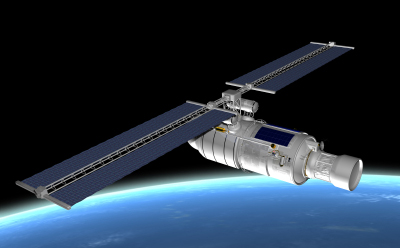What Will Shape the Future of Non-Terrestrial
Networks and Global IoT?
By: Miguel Carames

The rise of Non-Terrestrial Networks and the acceleration of IoT are a $58 billion opportunity that is knocking on CSPs’ doorsteps. However, to seize this opportunity, operators need to understand the underlying trends molding these markets and to start addressing some critical questions.
Trend 1: The Rise of NTNs
Non-Terrestrial Networks (NTNs) will soon become an integral part of the future connectivity fabric. Juniper Research projects that the number of satellites is expected to grow 150 percent over the next five years, from 10,000 in 2024 to over 24,000 by 2029. While strategic partnerships are already underway to deliver the promise of seamless, borderless connectivity for consumers and enterprises, the global network ecosystem needs to start adapting today to the rise of NTNs – from a technical, commercial, and philosophical standpoint.
For example, operators will need to adapt their business model and infrastructure to integrate NTNs with their existing networks. This will involve technical changes, such as upgrading core networks to handle satellite communications and hybrid terrestrial-satellite architectures. It also includes investment in new systems for managing spectrum, handling latency issues, and ensuring service continuity as users move between terrestrial and non-terrestrial networks. Operators will need advanced real-time analytics and monitoring to ensure network performance and reliability across the diverse and geographically dispersed endpoints and to deliver a quality of experience (QoE) similar to the one that users have grown accustomed to in today’s cellular networks. And they will require evolved service assurance capabilities to support emergency services that need reliable and stable connectivity in every corner of the world. Operators will also need to understand what fraud and security risks they need to prepare for with NTNs. Particularly as fraud and security threats will become more complex as traffic moves across the different types of networks and new vulnerabilities are exposed.
How operators approach roaming will also need to be redefined. Roaming agreements will involve terrestrial operators as well as satellite network operators and will become more complex as global and regional agreements take into account the unique nature of satellite communications, including longer latency times and the movement of satellites. New frameworks will also be needed to manage cross-network interoperability, spectrum allocation, and billing. To meet all of NTN’s new demands, operators will need advanced roaming and interconnect solutions to enable seamless transitions and handover between terrestrial and non-terrestrial networks, ensuring transparent billing, quality of service, and regulatory compliance across borders.

Trend 2: Ubiquitous Connectivity Sets up IoT for the Big League
One of NTN’s key drivers is its ability to extend the reach of IoT devices globally, allowing for real-time data collection, monitoring, and control from any location, at any time. And while industries such as connected cars, eHealth, payments, logistics and travel are already making huge strides and gaining momentum, agriculture, mining, and maritime will soon join the fold with the rise of NTNs. (See diagram above.)



















